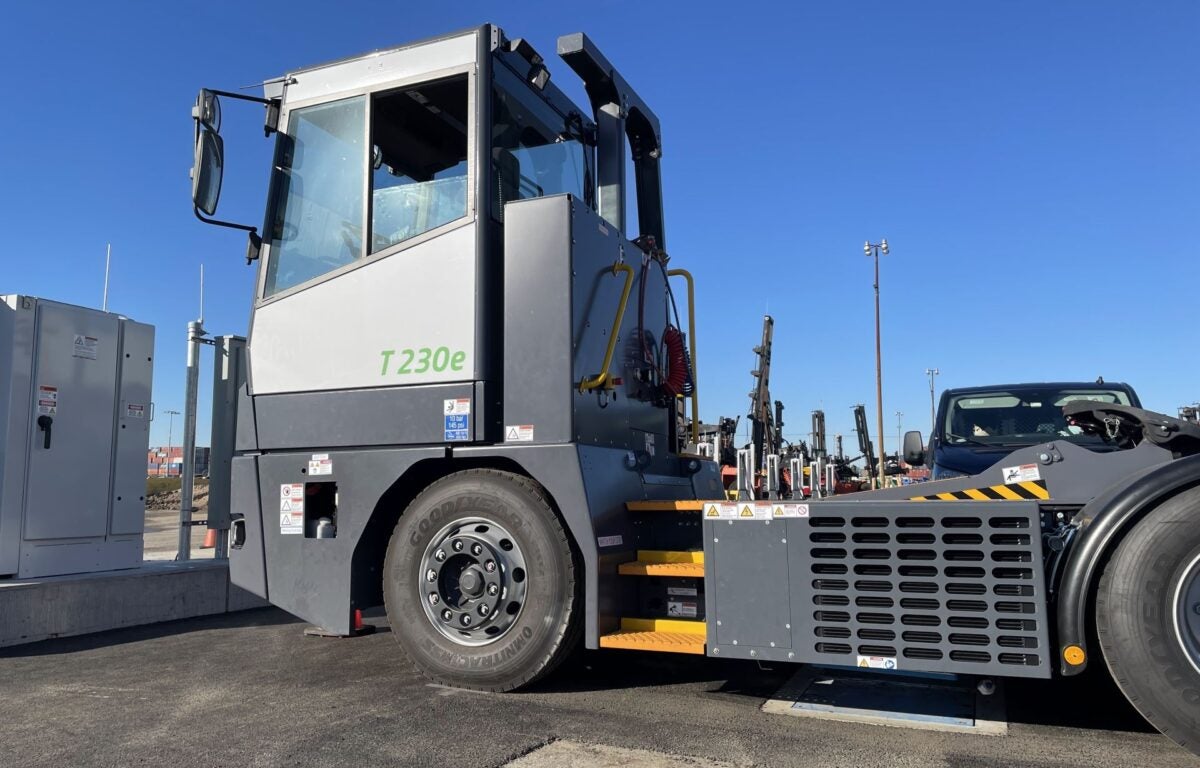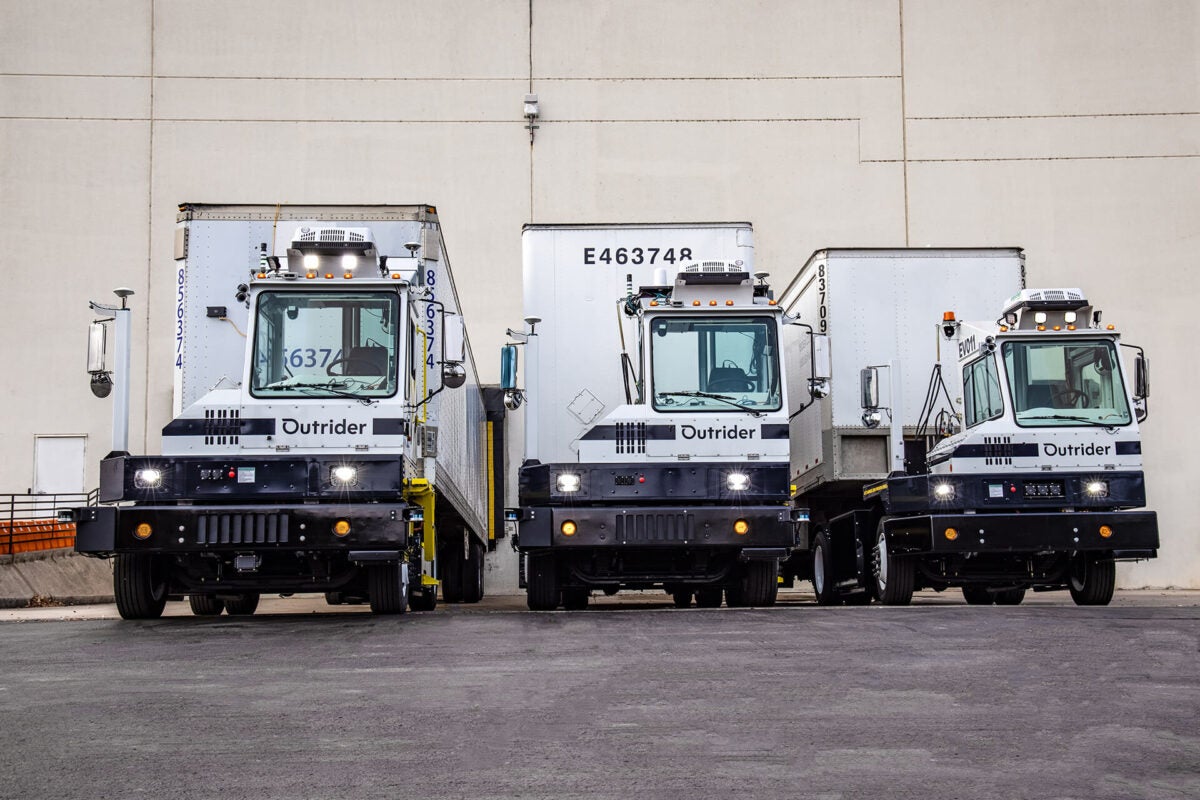Infra
Can wireless EV charging become an infrastructure player?

Wireless charging of electric vehicles — literally parking a vehicle over a concrete-embedded charging plate and magnetically connecting to a vehicle — is a niche mostly restricted to transit buses and yard tractors that pull containers around a distribution yard.
But as the rollout of plug-in charging is slowed by infrastructure buildout and lack of timely energizing, the underground solution also known as inductive charging could expand to other uses.
“We are probably the most face-value, front-end, expensive solution there is, but over the course of a three-year payback, we are probably cheaper than just about any other method,” Dave Dealy, president and chief commercial officer of InductEV, told me.
The King of Prussia, Pennsylvania-based company was born in late 2022. It purchased the debt of financially struggling, high-power wireless charging startup Momentum Dynamics. InductEV has raised about $140 million through three funding rounds.
“We’re really into fleets and facilities initially,” Dealy said. “So that takes us into port terminals, which are behind the fence; takes us into railroad intermodal facilities, which are largely those container handling operations inside the fence.
“Behind the fence, I see an 80% take rate in the top 10 port terminals or ports and terminals. Not only ramp tractors, but all container-handling equipment other than ship-to-shore cranes and rail-mounted cranes.”
A deal in the Port of Long Beach Container Terminal is pending final paperwork on EPA grant money, Dealy said. InductEV would provide 60 charging pads for 60 yard trucks.

Compared with the costs of constructing a concrete apron around a plug-in charging port, the running over of cables that have to be replaced and work rules that prohibit drivers from plugging in their own tractors, wireless charging can reach parity on a one-to-one basis, Dealy said.
Incentives a powerful lure
Like their plug-in counterparts, incentives for wireless charging can lower the cost of entry. Whether that leads to follow-on orders remains to be seen.
APM Terminals Elizabeth (New Jersey) is using a $1.4 million Environmental Protection Agency grant to purchase seven zero-emission Mafi T230 heavy-duty electric terminal tractors capable of plug-in or wireless charging.

The terminal completed infrastructure charging construction in late 2023. That included nine Level 3 60-to-180-kilowatt fast-charging stations and one InductEV wireless Level 3 150-kW fast charger. Two hours of wireless charging allows a yard tractor to operate for 16-20 hours.
Wave Charging, a subsidiary of Ideanomics, competes with InductEv. It announced a $500,000 purchase order in January with an unnamed company. In the same month, Wave said a six-month project with Dana Inc. and Kenworth Trucks led to the first OEM-approved high-power wireless charging integration into Kenworth K270E and K370E Class 6 electric trucks.
Most wireless charging still experimental
Purdue University researchers, Oak Ridge National Laboratory, Cummins Inc. and Walmart are working under a $5 million grant from the U.S. Department of Energy to possibly expand wireless charging for Class 8 tractors.
Cummins is developing a 750-kW wireless charging system with Oak Ridge. Purdue is testing the technology integrated into a Freightliner eCascadia for compatibility with other types of wireless systems. Walmart eventually will test the system as part of its fleet.
“The overall goal is to address the issues of cost and range anxiety associated with electric vehicles,” Steven Pekarek, a Purdue professor of electrical and computer engineering, said in a March 28 news release. “The anxiety is exacerbated in heavy-duty vehicles simply because of the demand of power you’re needing and the cost of the battery that’s required.”
A smaller battery would lend itself to slower, more frequent charging rather than fast charging of a larger battery that would wear out faster from longer charge cycles.
Overcoming a plug-in bias
Andrew Daga, who founded Momentum Dynamics, said the issue for wireless charging remains where the demand will come from first.
“It is a niche market within a niche market,” Daga told me. “The reason we don’t see greater implementation of wireless charging for commercial vehicles is that there’s a preponderance of belief that the way you charge a vehicle is with wire.
“The value proposition that wireless charging offers is all built around the idea of opportunity charging, not as a direct replacement for plug-in charging. We’ll give you partial fuel when you need it as often as you need it, and the truck driver doesn’t need to get out of the vehicle to do it. Overall, you’ll save a lot more money.”
Autonomous distribution yard developer Outrider sees wireless charging as an option for its driverless electric yard tractors.

“Outrider’s system is completely designed to integrate with a wireless charging station,” Outrider CEO Andrew Smith told me. “Because of the ground-up design of the future yard autonomy system, we’re looking to integrate seamlessly our large enterprise customers.”
Orange EV, the leading manufacturer of electric yard trucks, is open to if not enthusiastic about inductive charging.
“It can be part of the solution. It’s an option and we will support that option,” Kurt Neutgens, Orange co-founder and chief technology officer, told me. “Some customers will see that as value and others will say it really doesn’t make a difference for them.
“If you think about what the fueling costs are right now versus a diesel, and the time to fuel is much, much less for an electric, at least in our case. So, we actually have zero downtime to fuel. We only have to fuel when the operator’s on break,and it’s pretty easy to do a plug. But there are applications where inductive makes sense.”
Electric vehicles buck lower Q1 venture capital investment
Mobility technology investment by venture capitalists fell 19.3% to $6 billion in the first quarter. That left most startups to look for money elsewhere, according to the latest data from PitchBook. The number of deals was down about 24% compared with the same period last year.
“[It’s] an overall sentiment of caution in terms of VC activity in mobility tech and overall,” Jonathan Geurkink, PitchBook senior analyst for emerging technology research, told me. “It was up 5.7% on a year-over-year basis.”
EVs outpaced other verticals because of a $1.1 billion capital raise by Chinese EV startup IM Motors. It accounts for about 40% of $2.6 billion of inflows to EV companies.
“That one deal kind of skewed a bunch of other things,” Geurkink said.
For the trailing 12 months, the total EV market — commercial and consumer vehicles, charging infrastructure, batteries, battery materials, etc. — led all segments with $10 billion of investment, much of it in China, the acknowledged leader in EV development and the target of European and U.S. tariffs.
In the autonomy space, Applied Intuition, a developer of simulation software, raised $250 million in Q1. The company serves many automakers. It purchased the assets of autonomous truck developer Embark Technology for $71 million in May 2023.
“Maybe they were doing their raise at [the World Economic Forum at] Davos or something because some of the individuals — Henry Kravitz, Ray Dalio, Reid Hoffman, Andressen Horowitz — were all in on that deal,” Geurkink said.
Briefly noted …
Volvo has nearly 50 million miles of battery-powered trucking globally. Separately, the company announced that the daycab version of its new VNL will be offered in late 2025 with a battery-electric option.
Workhorse has added its 13th national dealer — Eco Auto in the Greater Boston area.
Walmart Canada has started using a Nikola Tre hydrogen-powered fuel cell truck in operations.
Truck Tech Episode No. 71: ClearFlame heats up emission reductions
That’s it for this week. Thanks for reading and watching. Click here to get Truck Tech via email on Fridays. And catch the latest in major events and hear from the top players on “Truck Tech” at 3 p.m. Wednesdays on the FreightWaves YouTube channel. Share your feedback and story ideas with aadler@freightwaves.com.



)






